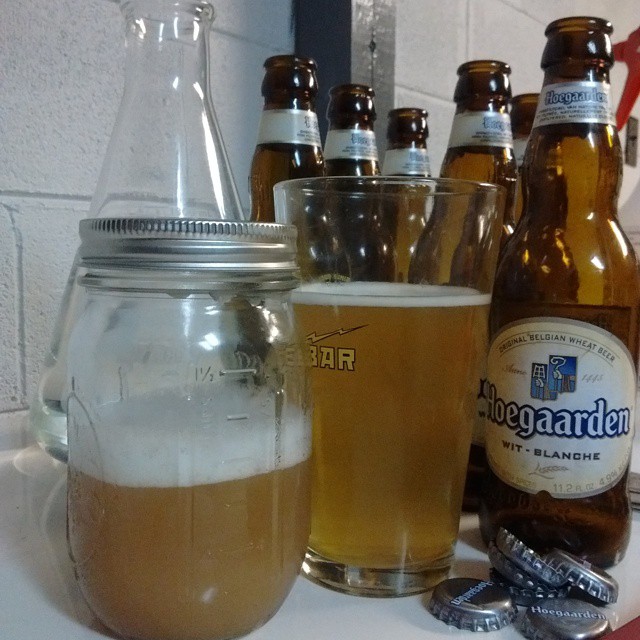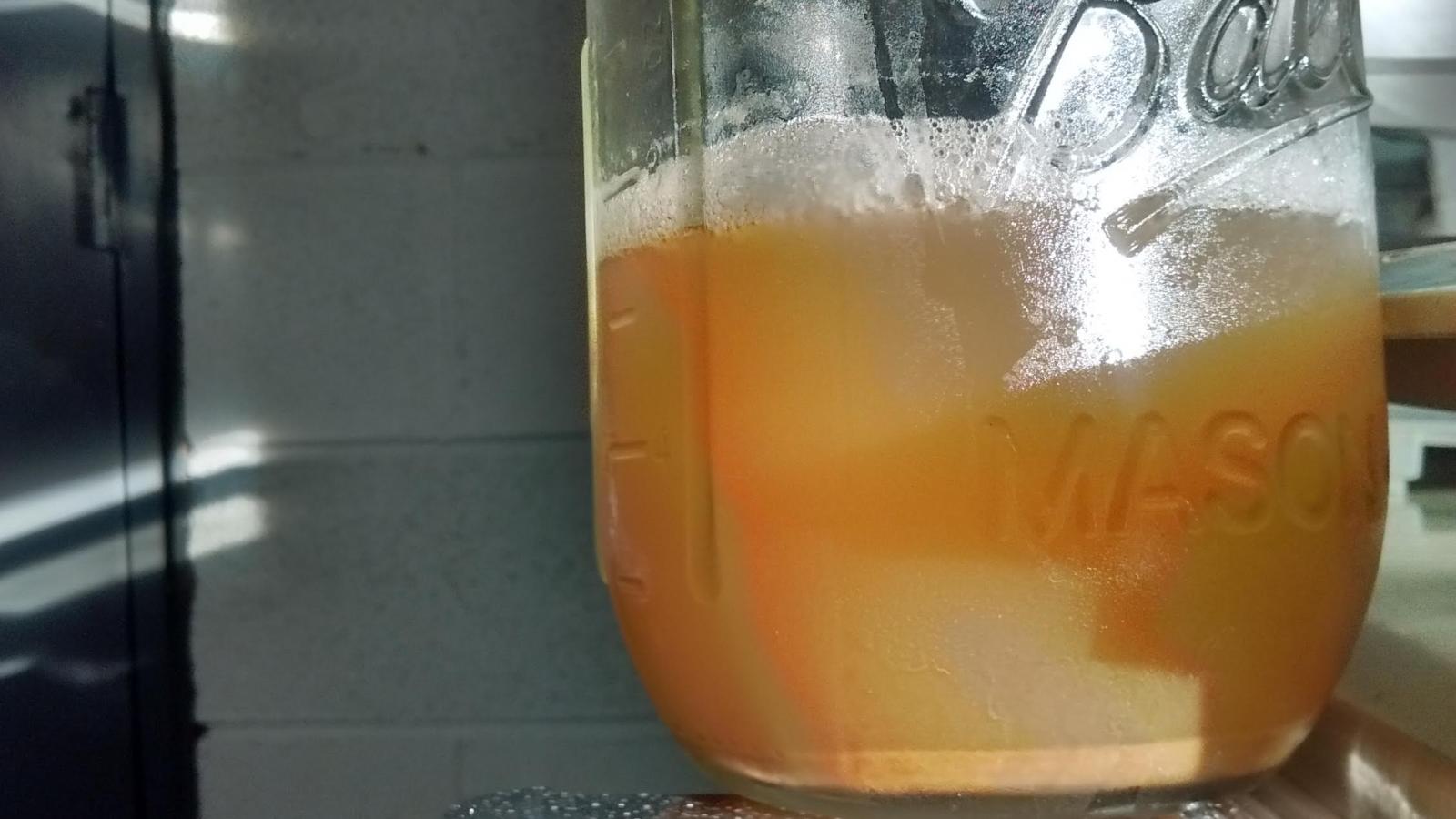So in the Mason Jar is 7 oz of Hoegaarden trub, collected from 6 bottles. You can see in the first picture immediately after filling the Jar compared to the color and clarity of the last pour. I put the jar in the fridge, planning to cold crash overnight and get my starter going today (I need the starter in 1 week and am planning 3 steps, so time is of the essence)
My plan was/is to decant most of the remaining beer so that I can start with a small (~100-200 mL) starter and step up. Adding wort to this much beer would start me with about 400+ mL which I have come to understand is not ideal for such little and stressed yeast.
After an hour I could see a very small sediment layer on the bottom. At 9 hours there is a pretty decent layer considering this is from 6 commercial bottles. It's dark but I expect the viability to be low which would give the yeast a darker color, right? However the beer is still quite dark and cloudy compared to the pint glass, and my concern is that this is may be mostly non-yeast trub and that if I decant I will loose a large percentage of my yeast.
I'm looking for someone with experience in this to help me decide on the best option:
1. It's a yeast cake. After 9-12 hours you have most of the yeast. Decant and make the starter now
2. It's trub. Much of the yeast is still in suspension. Make a 400mL Starter with 200ml beer + 200ml 1.04 wort. A week is too short to crash longer
3. It's trub but decanting the beer or having a small starter is too important to advise step 2 (even though you only have a week to make a 3 step starter)
Thanks for any advice/feedback


My plan was/is to decant most of the remaining beer so that I can start with a small (~100-200 mL) starter and step up. Adding wort to this much beer would start me with about 400+ mL which I have come to understand is not ideal for such little and stressed yeast.
After an hour I could see a very small sediment layer on the bottom. At 9 hours there is a pretty decent layer considering this is from 6 commercial bottles. It's dark but I expect the viability to be low which would give the yeast a darker color, right? However the beer is still quite dark and cloudy compared to the pint glass, and my concern is that this is may be mostly non-yeast trub and that if I decant I will loose a large percentage of my yeast.
I'm looking for someone with experience in this to help me decide on the best option:
1. It's a yeast cake. After 9-12 hours you have most of the yeast. Decant and make the starter now
2. It's trub. Much of the yeast is still in suspension. Make a 400mL Starter with 200ml beer + 200ml 1.04 wort. A week is too short to crash longer
3. It's trub but decanting the beer or having a small starter is too important to advise step 2 (even though you only have a week to make a 3 step starter)
Thanks for any advice/feedback




